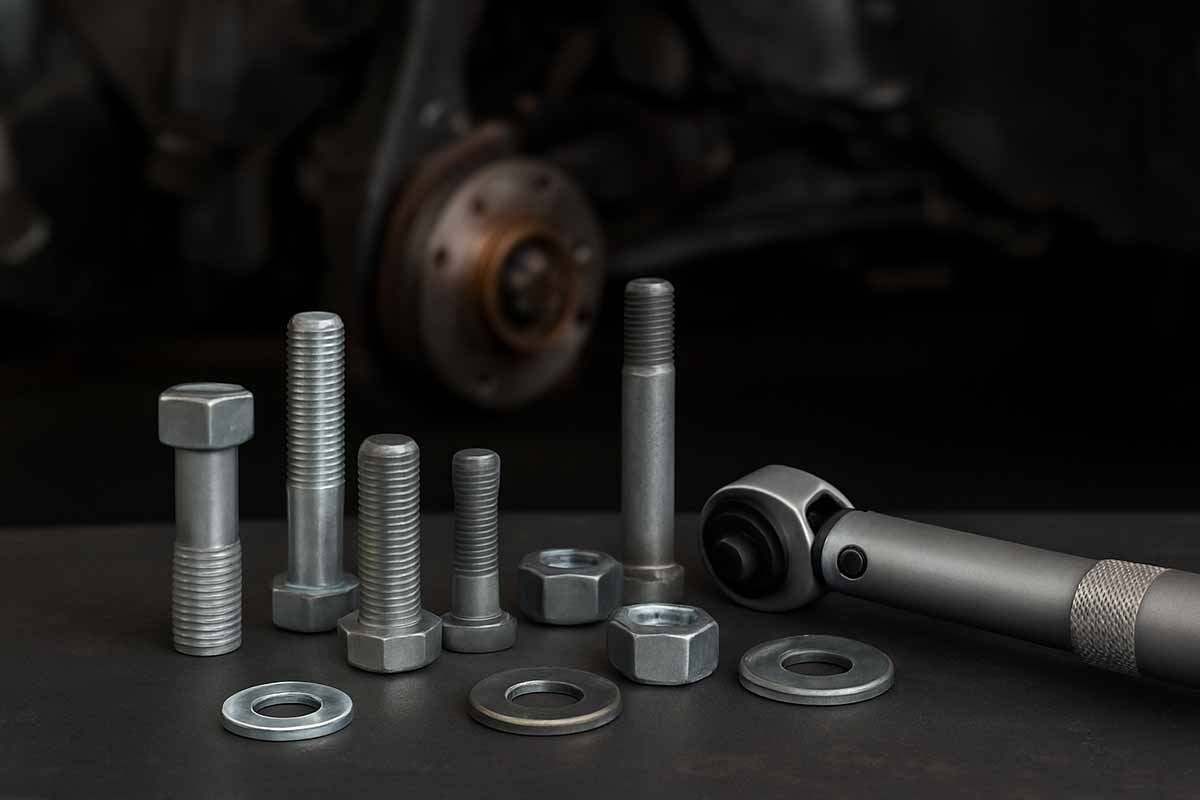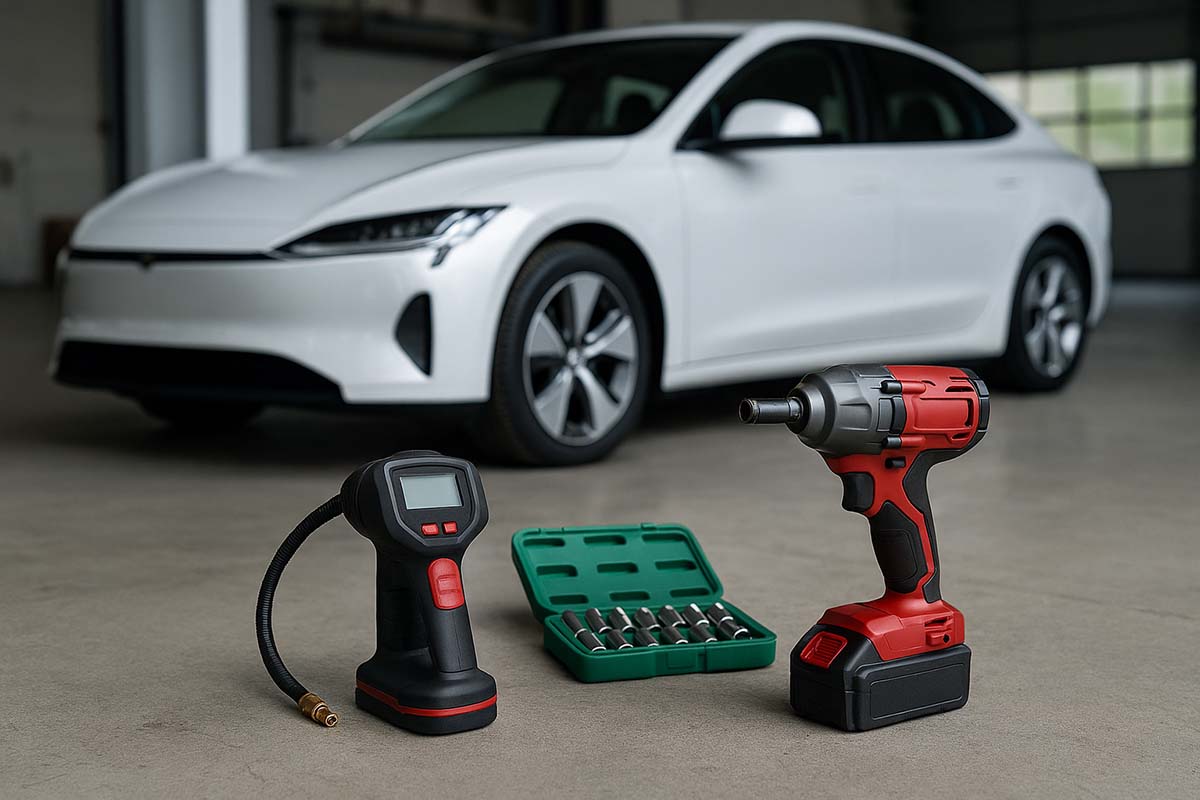Fasteners are the unsung heroes of the automotive world. They hold together everything from your car’s suspension to the smallest engine components. Yet, these humble bolts, nuts, and screws do far more than just keep parts from falling off — they maintain structural integrity, safety, and performance.
In this guide, we’ll dive deep into automotive fastener types, materials, coatings, and torque specifications so you can understand not just what to use, but why it matters. Whether you’re a DIY mechanic or a professional, this knowledge will save you from stripped threads, broken bolts, and costly rework.
1. What Are Automotive Fasteners?
As we have already exmplained in article Common Types of Industrial Fasteners and When to Use Them, automotive fasteners are mechanical devices that join or secure components in a vehicle. They come in many shapes, sizes, and materials, but all serve one purpose — creating a strong and reliable connection.
Common Types:
- Bolts & Screws: Threaded fasteners for structural and mechanical connections.
- Nuts: Pair with bolts for a secure fit.
- Washers: Distribute load and prevent loosening.
- Clips & Retainers: Hold panels, trims, and non-load-bearing parts.
- Studs: Permanent threaded rods for mounting parts like cylinder heads.
- Rivets: Permanent fastening for structural integrity in body panels.
2. Materials and Coatings
Fasteners are not just “metal bits” — their composition matters for strength, corrosion resistance, and application.
Materials:
- Steel: Most common, strong, cost-effective.
- Stainless Steel: Corrosion-resistant but can gall under high loads.
- Aluminum: Lightweight but lower tensile strength.
- Titanium: High strength-to-weight ratio, corrosion-resistant, expensive.
Coatings:
- Zinc Plating: Protects against corrosion.
- Phosphate Coating: Improves lubricity for assembly.
- Cadmium Plating: Excellent corrosion protection (less common due to toxicity).
- Black Oxide: Low-cost, mild corrosion resistance.
Interesting Fact:
Many high-strength automotive bolts are coated not just for corrosion resistance but also to control friction, ensuring accurate torque readings.
3. Understanding Torque Specs
Torque specification is the amount of rotational force required to properly tighten a fastener. Too little torque and the part could loosen; too much and you risk stripping threads, warping components, or snapping the bolt.
Why Torque Specs Matter:
- Maintain proper clamping force.
- Prevent part failure under load.
- Ensure safety-critical components (like brakes) perform correctly.
- Avoid damage to threads and mating surfaces.
Example:
A typical wheel lug nut may require 80–100 ft-lbs (108–135 Nm) of torque, depending on vehicle make and wheel material.
4. How to Measure Torque Correctly
- Use the Right Tool: Torque wrench (beam, click, or digital).
- Check Calibration: At least once a year or after heavy use.
- Tighten in Sequence: Especially for cylinder heads and wheels — follow manufacturer patterns.
- Avoid Lubricating Threads Unless Specified: It can alter torque readings.
Lesser-Known Fact:
Many torque specs are given for “dry” threads — adding oil or anti-seize can increase clamping force by 15–25%, potentially overtightening the fastener.
5. Common Torque Mistakes
- Guessing: Hand-tight “feel” is rarely accurate.
- Over-Reliance on Impact Tools: Great for loosening, risky for final tightening.
- Ignoring Manufacturer Specs: Each fastener has an optimal range.
- Not Re-Torquing: Some components require re-check after heat cycles (like cylinder heads).
6. Quick Reference Torque Examples
| Fastener Location | Typical Torque (ft-lbs) | Typical Torque (Nm) |
|---|---|---|
| Wheel Lug Nuts | 80–100 | 108–135 |
| Cylinder Head Bolts | 60–90 | 81–122 |
| Brake Caliper Bolts | 25–35 | 34–47 |
| Spark Plugs | 15–25 | 20–34 |
(Always confirm with the manufacturer’s manual — values vary by vehicle.)
Automotive Fasteners and Torque Specs Explained FAQ
8. Final Thoughts
Fasteners may seem small, but they’re fundamental to vehicle integrity and safety. Understanding torque specs is the difference between a reliable repair and a dangerous failure. By choosing the right fasteners, following proper torque procedures, and avoiding common mistakes, you can ensure every connection in your vehicle is secure and long-lasting.
You May Want to Read More About the Automotive Industry
- Industrial Tools in the Automotive Industry
- Digital Twins in Automotive Tooling: Smarter Maintenance, Fewer Breakdowns
- Comparing Pneumatic vs. Electric Tools in Automotive Workshops
- How Industry 4.0 Is Reshaping Automotive Assembly Lines
- Trends in Automotive Manufacturing Automation
- Impact of Industry 4.0 and IoT on Automotive Tooling
- Essential EV Toolkits for Modern Automotive Work
- Reviews of 5 Leading Automotive Tool Brands
- Top Tools for Automotive Repair and Diagnostics
- Specialized Equipment for Engine Rebuilding
- Automotive Fasteners and Torque Specs Explained
- Safety Tools and PPE in Automotive Workshops
- Troubleshooting Common Automotive Tool Problems
- Top Automotive Tool Brands Reviewed
- Fasteners in Automotive Manufacturing: What Makes the Cut?
- How to Use a Torque Wrench in the Automotive Industry
- Automotive Torque Wrench Buying Guide 2025
Your Turn:
Have you ever had a bolt snap or a wheel come loose because of incorrect torque? Share your story in the comments — and help other mechanics by sharing this guide on social media.





